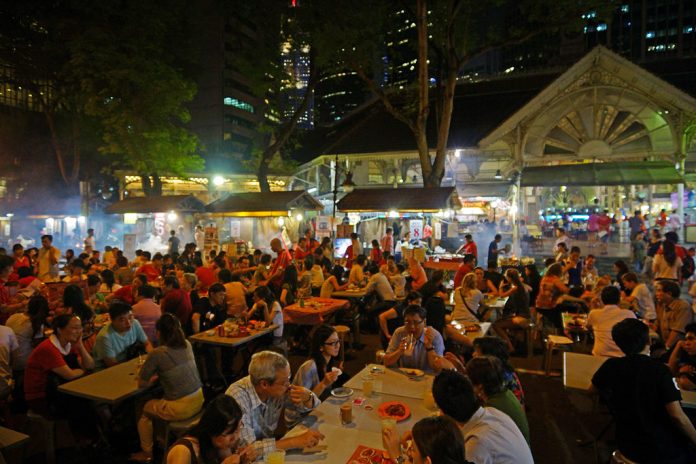
Among urban planners of the 21st century, few can claim to have as interesting and expansive careers as Joe Berridge, partner at Urban Strategies Inc. in Toronto and the author of Perfect City: An Urban Fixer’s Global Search for Magic in the Modern Metropolis.
With warmth and candor, Berridge gives Perfect City readers firsthand encounters with some of the most influential city builders and shapers of our era, including the venerable Jane Jacobs, who was a Toronto neighbor and friend of Berridge.
However, Berridge is also an insightful urbanist in his own right, and over eight cities and four continents, he shares insights gleaned from decades of international practice, a professional life that has shown him just how illusive perfection can be. “Perfect city? That’s absurd. There is no such thing, any more than there are perfect people,” Berridge writes in the introduction to Perfect City, “but cities, like people, do have perfect moments.”
Despite a history of working on megaprojects, like London’s Canary Wharf, Berridge approaches the concept of city building with humility, never downplaying the effort it takes to create perfect city moments, particularly in the present era in which change can accelerate at bewildering pace.
But for all of the challenges the book acknowledges, including the global threat of climate change, Perfect City is not a despairing narrative. That is because of Berridge himself whose basic affection for humankind, messy and flawed though our species might be, shines through in every chapter. Berridge might describe himself as an “urban fixer,” but there is nothing cold or mechanical about his understanding of cities.
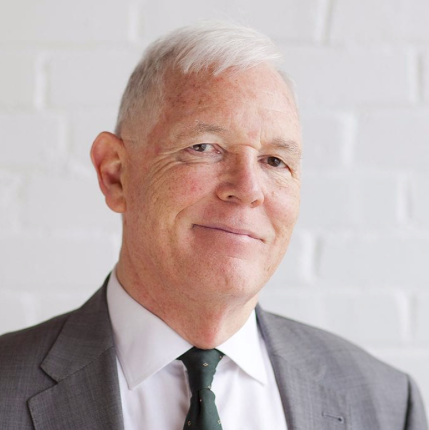
The following interview has been edited for clarity and brevity.
What was your inspiration for writing Perfect City?
I’ve had a wonderful working life that has taken me to so many different cities and allowed me to get into the innards of these cities. It is fascinating to see how the machine works. Despite all of the differences, there are some common threads I have been able to identify that are remarkably similar, such as how do you stimulate economic growth? How do you integrate flows of immigrants? How do you resolve challenges like income inequality, transit systems, climate change? But that the same time, how do you make a city a lovely, delightful, cheerful place to live?
As a city planner that’s what I’m always trying to do, but usually I am limited in my work to looking at a specific problem. What I really enjoy is looking at the city as a whole. City planning is one of the most fascinating professions because you get to meet everyone from high to low — mayors, architects, and all of the folks who turn out to public meetings in church basements.
The other thing is that we think of cities as these great big machines, but they are actually driven by people. They are semi-independent machines, with their own logic and impetus. The wonderful thing about my working life is that I meet all these extraordinary characters. Nothing is going to happen unless somebody really puts their guts on the line. No big project is going to happen unless someone sweats blood.
How did you select the cities to include in Perfect City? Were there any cities you had to leave out?
The cities in the book are examples of cities I have worked in. There are quite a lot of other cities that work has taken me to, but I selected these specific cities because I wanted to show different parts of the world and cities of different scales. Belfast, for instance, only has about 500,000 people, but it was in civil war for 20 years, so my work there was different than anywhere else. It was fascinating to sit down at the table with two men from two different terrorist groups and see them come to terms on the basics for how to build their city. I was very moved by Belfast.
In terms of what was left out, my wife grew up in Paris, and I know Paris very well, but it is another thing to be on the ground in a city, meet some of the people who are in charge of it, and figure out how it works on a practical level.
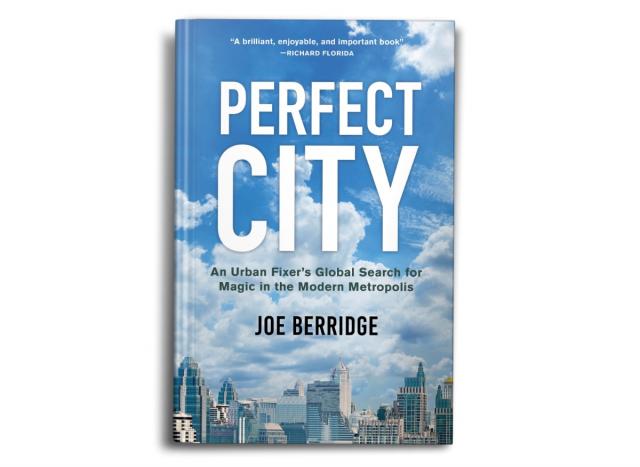
Your book digs into the competing city building ideologies of Jane Jacobs and her nemesis, Robert Moses, who was known as the “master builder” of New York City in that era. How do you see these competing ideologies still at work in cities today?
Jane Jacobs was hugely influential on today’s cities. I knew her as a neighbor and professional. The problem is that she only addressed half the problems we face, especially today when you look at questions like, ‘how the heck do you build a new transit system at the scale required? How do you have a really well funded affordable housing program?
Jane didn’t have anything to say about any of those things. Her approach doesn’t scale up well beyond the street and neighborhood. In Toronto, there is a bit of a revisionist critique growing, an idea that she spawned the kind of NIMBYism — all you big bad outside forces — you don’t understand the spirt of this community — that has become a call to arms for higher income people resisting change.
She was a much more generous soul than that. Overall, the way her work has been interpreted has been healthy for the city, all the planning legislation, yes it had a good protective impact, but it also congealed the fact that it has become very very hard to get things done in the modern city.

This what is so fascinating about Singapore and Shanghai. They don’t have a bureaucratic blob and they actually build things, like Robert Moses did. It’s actually shocking that I should find that aberrant, but in parts of Toronto, I’ve worked on plans five times and still nothing has happened. By contrast, Shanghai didn’t have a subway in 1993 and now it has biggest subway in the world.
How are we going to address climate change if we aren’t able to aggressively reduce greenhouse gas emissions from automobile use? Because of how their systems work, Singapore and Shanghai have been able to confront the problem. Shanghai has low car ownership, despite having become quite wealthy, and Singapore is close to banning the private car.

When it comes to the changes we need to make for climate change, I think it’s important to remember that in ten years the horse went from being the dominant form of transportation to having disappeared from our roads. If we can create electricity in environmentally healthy way and use that electricity to power transportation, we can reduce a significant source of air pollution.
Why does Perfect City include so many descriptions of megaprojects, like Hudson Yards in New York?
Because I think megaprojects are timely. The Amazon HQ2 search was fascinating on a bunch of levels — it was almost like a scientific experiment. When you look at the criteria for the kind of city they want to go, it wasn’t the city that costs least, some kind of bland, corporatist vision. Instead, Amazon said, ‘We want a city with transit, ambition, and cultural values.’ The result was a fascinating horse race.
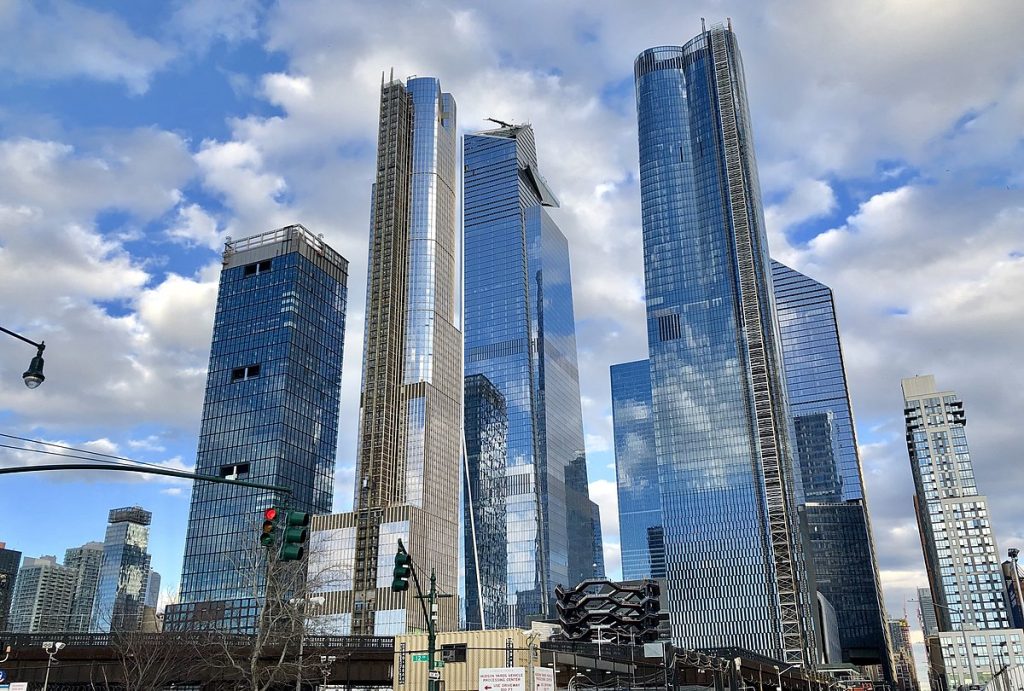
The book went to press by the time Amazon arrived in NYC, but not before they were gone. There are so many issues that are raised by those big monopoly tech companies: do we really want them in our town? Is it OK to give these monopolistic corporations incentives and grants? Is it the right thing to do to tell them to take a hike?
I’m working on the Google Sidewalk Labs project [in Toronto] and they raised really compelling questions about data privacy and management. Some of the questions have already been there, like how to manage police cameras and surveillance, but the Google proposal heightens those questions.
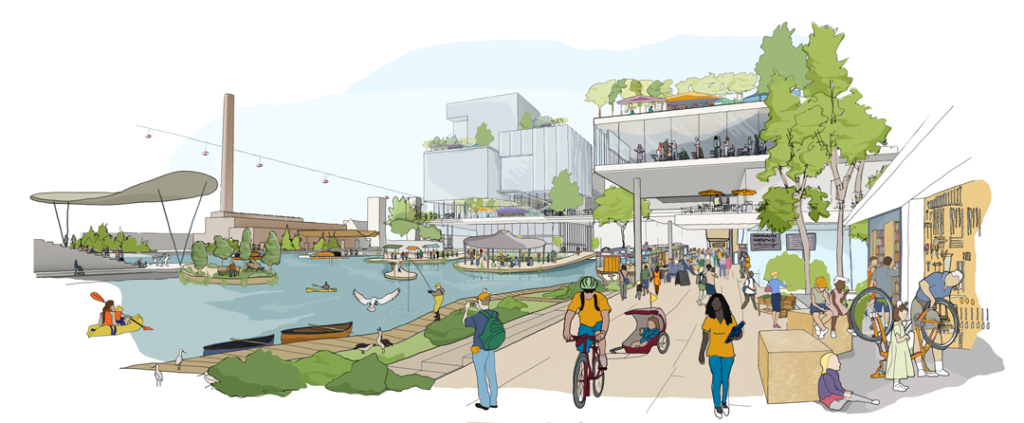
What is the role of food in the book?
I desperately did not want to write a book that included too much of the standard finger waiving you find in urbanist literature. Cities are about delight — that’s why people live in them. People love the richness of delight that you find in the city. The bigger the better — that’s why young people swarm into cities, they want it to feel free. A part of that delight is the food you get in cities — the rich expression of urban personalities through food.
I never go to those big fancy restaurants. I find them boring. What I love are kinds of street food, neighborhood joints, beach oyster bars. Places where real people go to relax and enjoy chatting with friends and family.
In the book you write that you are “suspicious of the contemporary search for grand urban beauty.” How do you see urban delight and grand urban beauty as different?
I’m as fond of a tree as the next guy and stone pavers too. I’ve seen them in Boston, Barcelona, and Bilbao… there is a kind of city vision of the interior of a Starbucks, maybe more sophisticated, like a universal city version of Eataly (an upscale Italian grocery chain), but still they all look the same.
There is too much that’s all the same. The store mix doesn’t vary much in upscale neighborhoods, whether in London or Shanghai. There is even a kind of blandness coming from the elimination of the car in certain European cities that have moved toward being pedestrianized.
You should never calm the chaos of the city. You should never impose complete order on it, otherwise you end up with central London, which feels like a stage set for tourism.
I do think there is a search for a very narrow band of beauty in the city now. That’s why I put out the idea of ugly beauty in book. For me, the really interesting places are on the fringes and in the suburbs.
What else do you want prospective readers to know about Perfect City?
l wrote it because I wanted to share my fascination and delight in what frankly are humankind’s greatest creations. Delight, pleasure and enjoyment in cities come in all kinds of forms. As planners, we are a profession need to relax and let the city be. At the same — in a contradictory thought — we are not going do anything about climate change, congestion, and inequality, or any of the big issues of our time, unless you have really quite strong government acting in the way that Asian governments do or as Robert Moses did.
Think of what the federal highway authority built in 10 years. You would not be doing that with today’s public meetings and assessment. No, you would have to have a much more top down interventionist style. But you also need to let the city to do its millennial magic, which cities have done since the beginning of time.
Last, it’s important to state that immigrants make cities. Toronto is only a world city because the it has the biggest flow of immigrants of any European or North American city. We are at time in which immigration is really being challenged. Nativism is reasserting itself and that will have a bad effect on cities.
The featured image is by Allie_Caulfield and is used via Wikimedia Commons. It shows Boon Tat Street in Singapore.
Natalie Bicknell Argerious (she/her) is a reporter and podcast host at The Urbanist. She previously served as managing editor. A passionate urban explorer since childhood, she loves learning how to make cities more inclusive, vibrant, and environmentally resilient. You can often find her wandering around Seattle's Central District and Capitol Hill with her dogs and cat. Email her at natalie [at] theurbanist [dot] org.

